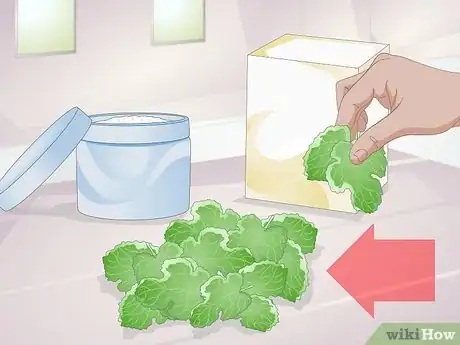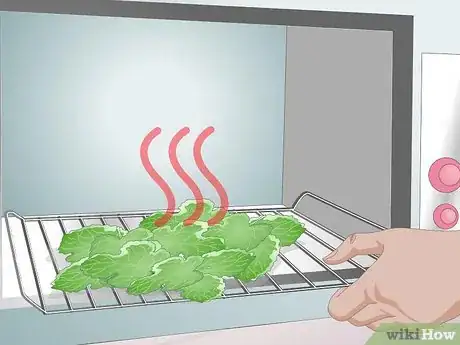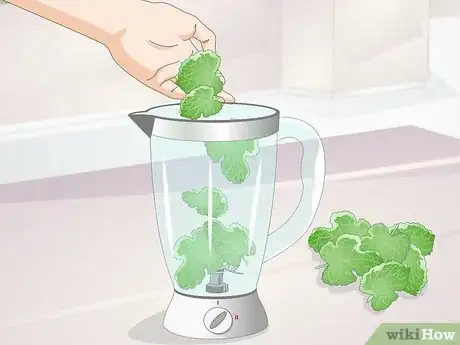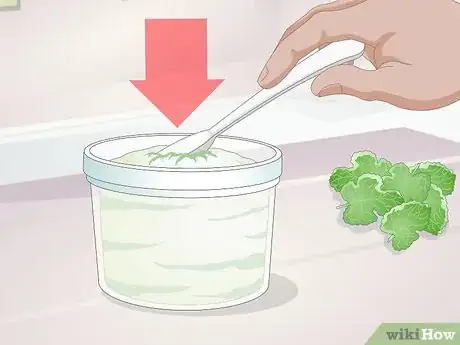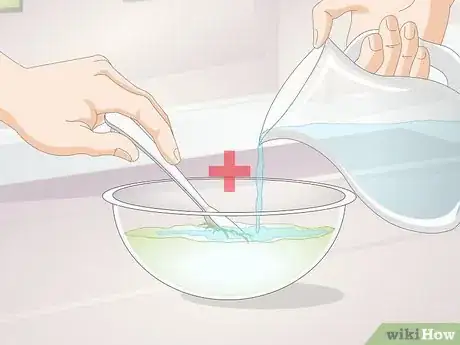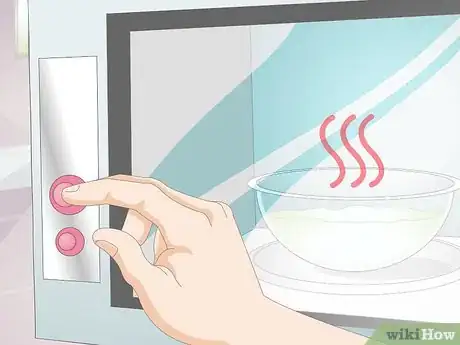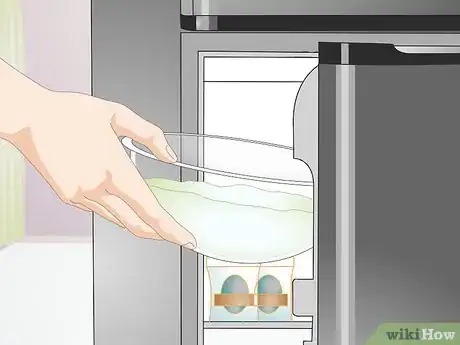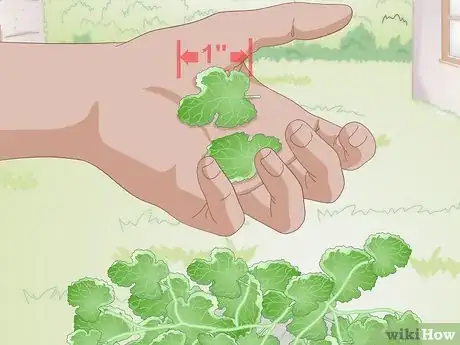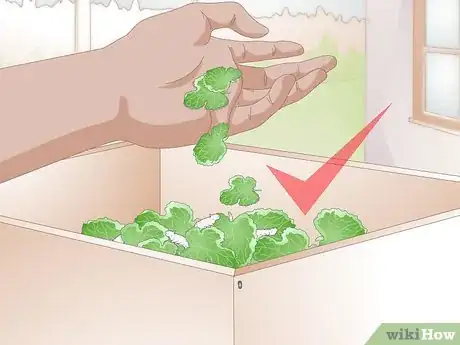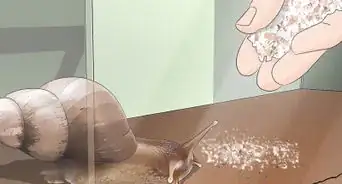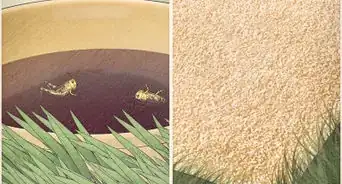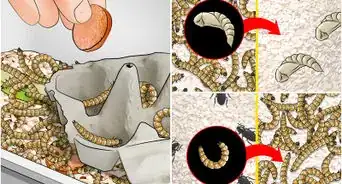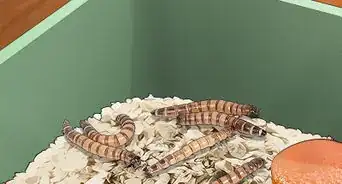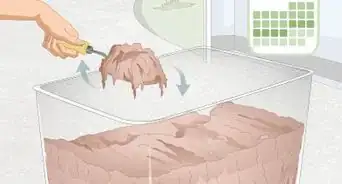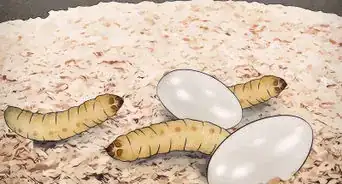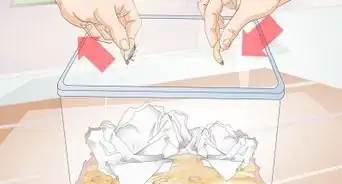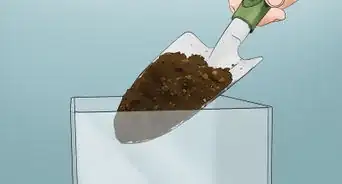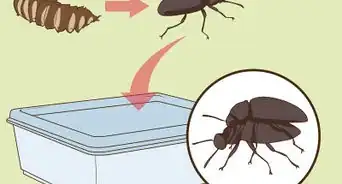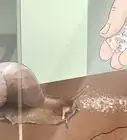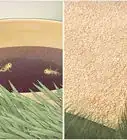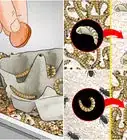This article was co-authored by wikiHow Staff. Our trained team of editors and researchers validate articles for accuracy and comprehensiveness. wikiHow's Content Management Team carefully monitors the work from our editorial staff to ensure that each article is backed by trusted research and meets our high quality standards.
wikiHow marks an article as reader-approved once it receives enough positive feedback. In this case, 85% of readers who voted found the article helpful, earning it our reader-approved status.
This article has been viewed 77,905 times.
Learn more...
Silkworms are revered for their ability to produce fine silk thread, but many people also raise silkworms as pets. They're easy to care for, but they need plenty of food. Silkworms will only eat fresh mulberry leaves or silkworm chow (made from processed mulberry leaves). If you want to raise silkworms at home, you'll need to either acquire fresh mulberry leaves, buy pre-packaged silkworm chow, or make your own.
Steps
Making Silkworm Chow From Scratch
-
1Gather the ingredients. Before you begin making your chow, you'll want to gather all the materials you'll need. The main ingredients are dried mulberry leaves, soy flour, and maize or cornmeal.[1]
- Weigh out 29 ounces (822.15 grams) of mulberry leaves.
- Weigh 28 ounces (793.8 grams) of soy flour.
- Measure 6.1 ounces (172.935 grams) of maize/corn meal.
- Do not mix the ingredients yet. You'll need to prepare the mulberry leaves first.
-
2Dry out the mulberry leaves. While you can feed your silkworms fresh mulberry leaves, you will need to dry and grind your leaves if you want to make chow. Make sure the leaves are completely dry before proceeding with the recipe.[2]
- You can dry out your leaves in an oven or with a dehydrator.
- Check that the leaves are completely dry. Any residual moisture can cause mold or bacteria to grow in the chow.
- The dried leaves should be brittle and flaky to the touch.
Advertisement -
3Grind the dried mulberry leaves into powder. Once the leaves are completely dry, you'll need to grind them down into a fine powder. This powder will become the main ingredient in your powdered silkworm chow.[3]
- Break the brittle leaves into small pieces.[4]
- Feed the pieces of dried leaves into a coffee grinder, herb grinder, or food processor.
- If there are any chunky pieces after grinding, scoop them into a fine mesh strainer and press the chunks through the mesh with the back side of a spoon.
-
4Combine and store the dry ingredients. Once you've ground the mulberry leaves into a fine powder, you can combine them with the soy flour and corn meal. This will give you a powdered silkworm chow similar to what you would buy in stores or through an online retailer.
- When you're ready to feed the chow to your silkworms, you can follow the standard powdered chow preparation instructions as you would for store-bought powder.
Preparing a Powdered Silkworm Chow
-
1Mix the powder with water. The first step in preparing powdered silkworm chow is to add water. You'll want to make sure that you use the right ratios of water and powder to achieve an ideal consistency.
- Some experts recommend a ratio of one part silkworm chow to two parts water.
- One pound (453.6 grams) of prepared chow should be sufficient to raise 20 to 25 silkworms through a complete life cycle.[5] You can scale your mix preparations up or down as needed.
- Use hot water to facilitate a better mix.
- Mix the powder and water for approximately three to five minutes to ensure that they are thoroughly blended together.
-
2Heat up the mixture in the microwave. Heating the mixture will help form a more solid chow patty. It can also help kill any bacteria or mold that may have formed in the chow mix.
- Cover the container with plastic wrap. This will help seal in moisture and heat the mixture more efficiently.
- Microwave the mixture for three to eight minutes, depending on the strength of your microwave.
-
3Leave the chow in the refrigerator to harden. The heated chow patty should be left in the refrigerator until it hardens to a cream cheese-like consistency. Make sure the mixture is not too watery, as watery chow could potentially drown your silkworms.
- The exact duration of time it takes to harden will vary, depending on your refrigerator and the consistency of your chow.
-
4Cut the hardened chow into small pieces and serve. Once the chow has hardened, it can be cut and served to your silkworms. You can also use a cheese grater to shave the hardened chow and distribute it more evenly.[6]
Using Real Mulberry Leaves
-
1Secure a steady mulberry source. If you're opting to use real mulberry leaves, you'll need a steady source to ensure that they're fresh. Some experts advise that the mulberry leaves should be fresh and moist to ensure a healthy batch of silkworms.[7]
- Make sure the leaves are free of pesticides, as these toxins could kill your silkworms.
-
2Use appropriately-sized leaves. Using fresh mulberry leaves is easier than making your own chow, but you can't just toss some leaves into your silkworm habitat. The leaves you serve should be sized appropriately for the silkworms you're raising.
- Young silkworms can only eat young leaves. Older leaves are too tough for young silkworms to eat.
- Newly hatched silkworms should only be fed tiny new growth mulberry leaves measuring approximately 0.5 to 1 inch (1.25 to 2.5 centimeters) long.[8] Older silkworms can safely eat larger, older leaves.
-
3Distribute the mulberry leaves to your silkworms. Your silkworms will readily eat the leaves you give them. Over time, though, they may stop eating for extended periods. This is normal; silkworms molt three or four times during their growing period, and they typically stop eating or moving just before a molt.[9]
Community Q&A
-
QuestionCan you freeze the blocks once your chow is made?
 Community AnswerYes, but you should let the blocks thaw out to room temperature before cutting and serving them to your silkworms.
Community AnswerYes, but you should let the blocks thaw out to room temperature before cutting and serving them to your silkworms. -
QuestionI'm making silkworm chow, which calls for 29 ounces of mulberry leaves. Is that the weight of the leaves before or after they are dried?
 Community AnswerIf the recipe does not specify, assume that it means dry leaves.
Community AnswerIf the recipe does not specify, assume that it means dry leaves. -
QuestionWill this food work for hornworms?
 Community AnswerHornworms will eat anything as long as it's green.
Community AnswerHornworms will eat anything as long as it's green.
Things You'll Need
- 29 ounces (822.15 grams) of mulberry leaves
- 28 ounces (793.8 grams) of soy flour
- 6.1 ounces (172.935 grams) of maize/corn meal
References
- ↑ http://www.chameleonforums.com/threads/mulberry-chow-recipe.24055/
- ↑ http://www.chameleonforums.com/threads/mulberry-chow-recipe.24055/
- ↑ http://www.chameleonforums.com/threads/mulberry-chow-recipe.24055/
- ↑ http://www.anniesremedy.com/chart_remedy_powders.php
- ↑ http://www.mulberryfarms.com/care-raising-tips-faq-12.html
- ↑ https://www.silkwormshop.com/faq.html
- ↑ http://www.burkesbackyard.com.au/fact-sheets/pets/pet-road-tests/silkworms-as-pets/#.V2rdgpMrKb8
- ↑ http://www.mulberryfarms.com/care-raising-tips-faq-12.html
- ↑ https://www.silkwormshop.com/faq.html
